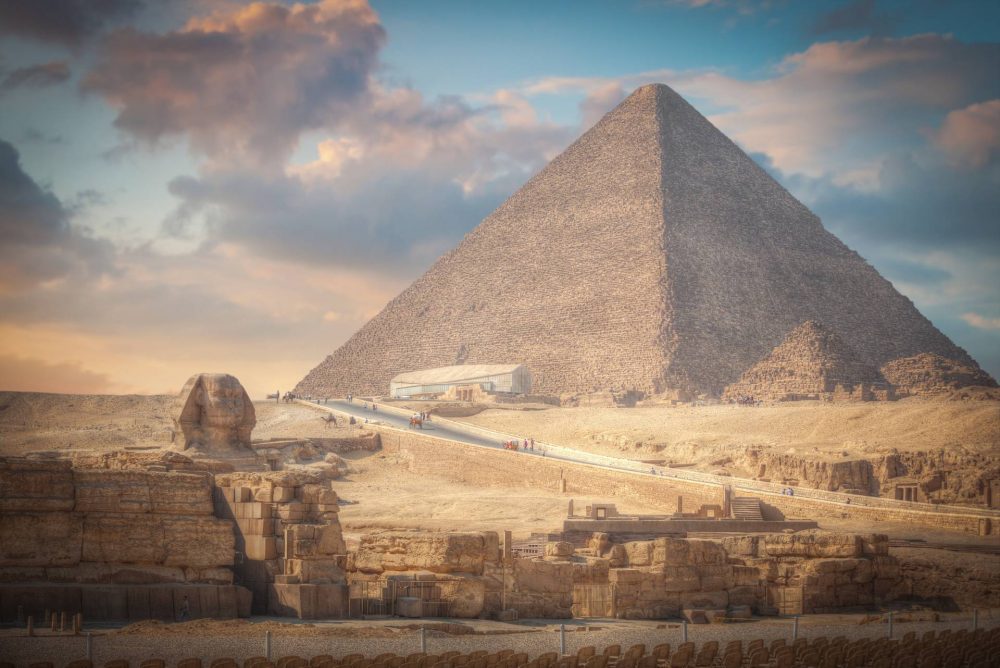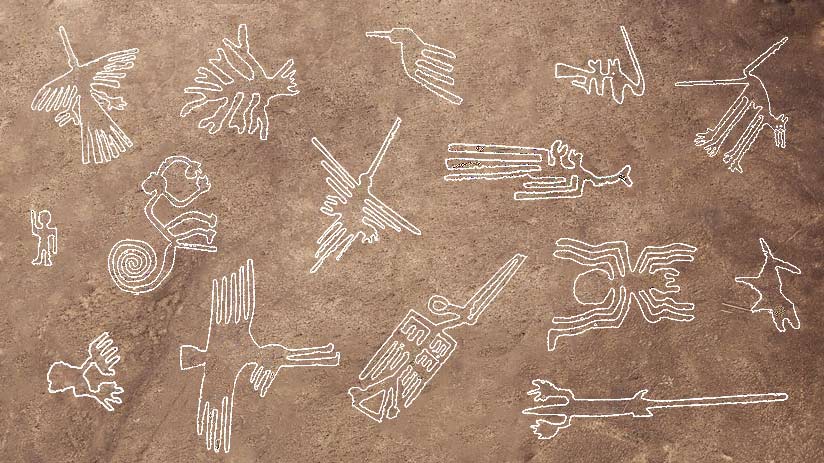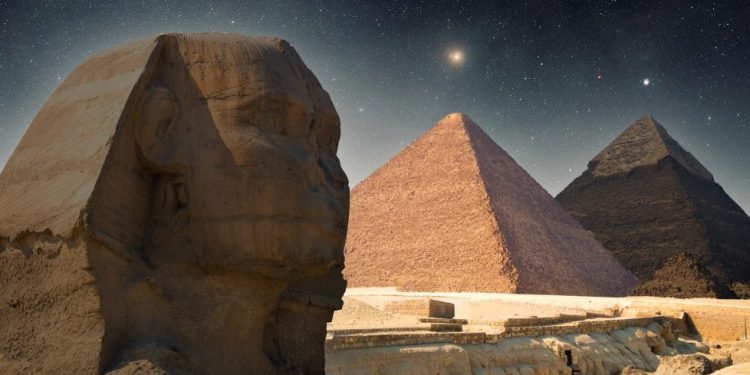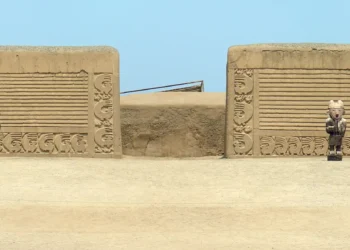For generations, the search for the Garden of Eden has captivated scholars, explorers, and the faithful. Somewhere, perhaps, beyond myth and scripture, a real place inspired the story of paradise. The Book of Genesis points to rivers flowing from a lush garden where life itself began. Most have long looked to Mesopotamia. But now, a new theory dares to shift the compass. What if Eden pointed to Egypt? What if the Tree of Life was not a plant at all, but the Great Pyramid of Giza?
It sounds impossible. And yet, the clues stretch across ancient texts, forgotten maps, and cosmic alignments. One researcher believes these clues form a pattern too clear to ignore. His theory is bold, controversial, and easy to dismiss. But it also tells a story that speaks to something older than history; humanity’s longing to find its origin written into the stones of the Earth.
What does the Bible actually say about Eden’s location?
In the Book of Genesis, Eden is described as a place where a river flows out and branches into four: the Pishon, Gihon, Tigris, and Euphrates. The Tigris and Euphrates are well-known rivers in modern-day Iraq. For this reason, many scholars have placed Eden somewhere near ancient Sumer.
The other two rivers, however, remain a mystery. The Pishon has never been clearly identified. The Gihon, intriguingly, is said to flow around the land of Cush. In ancient geography, Cush was often linked to regions in Africa — possibly Nubia or Ethiopia. This raises a critical question. If one of Eden’s rivers flows near the Nile, could the original story point toward Africa instead?
The idea is not new. Some early theologians speculated that Eden may have been on the Nile. But until recently, no one tried to place its sacred centerpiece — the Tree of Life — in Egypt’s most iconic monument.
A radical new proposal connects Eden to Giza
In 2024, Dr. Konstantin Borisov, an independent scholar with a background in historical symbolism, published a theory that challenges the mainstream view. Drawing on a mix of ancient cartography, biblical interpretation, and light simulation technology, Borisov argues that Eden’s rivers can be reinterpreted. In his view, the Gihon is the Nile. The Pishon might have been a seasonal or now-vanished waterway in Africa. With the Nile included, Egypt becomes a candidate for Eden’s hidden geography.
One map in particular caught Borisov’s attention. The Hecataeus world map, attributed to a Greek geographer from the 6th century BCE, shows four great rivers flowing from the center of the known world: the Nile, the Tigris, the Euphrates, and the Indus. To Borisov, this pattern fits the biblical account better than the Mesopotamian model. If Giza lies near this symbolic center, then what structure could stand in place of Eden’s most sacred feature?

Could the Great Pyramid have symbolized the Tree of Life?
The Tree of Life is often pictured as a literal tree. But in the world of myth, it was more than that. In ancient stories, it was a bridge between worlds. It was a cosmic pillar that linked earth to heaven. In many cultures, this idea was not always tied to vegetation. It could be a mountain, a staircase, even a tower of stone.
Borisov proposes that the Great Pyramid, the oldest and largest in Egypt, was designed to serve exactly this purpose. Using computer modeling, he simulated the movement of sunlight within the King’s Chamber at key points in the year. What he found was striking to him. At specific angles, shafts of light formed patterns on the stone walls that, to him, resembled branches. He believes this was not a coincidence but a deliberate design meant to echo the idea of a tree and not just any tree, but the Tree of Life.
Further, he suggests the pyramid’s internal geometry was meant to recreate a symbolic “river of light,” flowing vertically through the structure, like the mythical Oceanus — the celestial river said to encircle the heavens. This ties into the Greek and Egyptian traditions of sacred light, divine flow, and spiritual ascent.
Were ancient monuments part of a shared design?
Borisov’s theory extends beyond Giza. He notes that several sacred sites around the world appear to align on a great circle path across the planet. This includes the Nazca lines in Peru, the ancient city of Ur in Iraq, Machu Picchu in the Andes, and of course, Giza.

This idea echoes the older “Prehistoric Alignment of World Wonders” hypothesis, which has long been dismissed by mainstream archaeologists. Critics argue that alignments can appear through coincidence, especially when dealing with so many points on a sphere. But Borisov suggests that even if these alignments were not engineered with modern precision, they reveal a shared symbolic intent — a global effort to reflect the heavens on Earth.
While this part of his theory is speculative, it raises a deeper question. Could ancient civilizations, separated by continents and time, have shared a common belief in a sacred axis? And if so, did the Great Pyramid stand at its heart?
Ancient traditions of the Tree of Life across cultures
The Tree of Life appears in myths from nearly every corner of the ancient world. In Sumerian legend, it stands in the center of the divine city. In Hindu cosmology, the Ashvattha tree connects heaven, earth, and the underworld. The Norse called it Yggdrasil. The Egyptians had the Ished tree, which grew in Heliopolis, and from which gods and kings received wisdom.
None of these trees are described in strictly botanical terms. They represent life, knowledge, divine order, and cosmic balance. Often, they are linked to mountains or light. Some are said to grow from the primordial mound, the very idea embodied by a pyramid.
This suggests that the Tree of Life may never have been meant as a literal tree. It may have always been a symbol. And if so, the Great Pyramid fits the symbol as well as any living plant.
Not accepted by most scholars
Borisov’s theory is not accepted by most scholars. It stretches across disciplines and makes leaps that traditional archaeology is unlikely to follow. But it does something valuable. It opens a new conversation about ancient symbols, forgotten connections, and how we read the stories passed down over millennia.
The theory also shows how new tools, such as 3D light simulations and satellite imaging, are changing the way we explore old mysteries. These technologies allow researchers to test symbolic interpretations in ways that were never before possible.
In the end, the power of the idea may not lie in whether Eden was in Egypt or whether the pyramid was built to channel celestial light. The power lies in the fact that we still care. That people across time have sought to map the divine onto the Earth. That they built monuments not just to rule, but to remember.
Use caution, stay curious
While Borisov’s paper was published in a peer-reviewed platform, it belongs to the category of speculative research. It relies on symbolism, reinterpretation of ancient maps, and astronomical modeling, not on excavation or written evidence from the builders themselves.
That doesn’t make it meaningless, but it does mean readers should view it with thoughtful skepticism. As Carl Sagan once said, extraordinary claims require extraordinary evidence. This theory has sparked conversation, but it has not yet presented proof.
Still, in exploring these possibilities, we are reminded that ancient monuments continue to hold mysteries, and that stories from scripture and stone may still have secrets left to reveal.
Whether the Garden of Eden truly pointed to Egypt, and whether the Great Pyramid was meant to reflect the Tree of Life, one thing is clear: the desire to trace our spiritual origins has never faded. In myths, maps, and monuments, we continue to search for the place where it all began.











